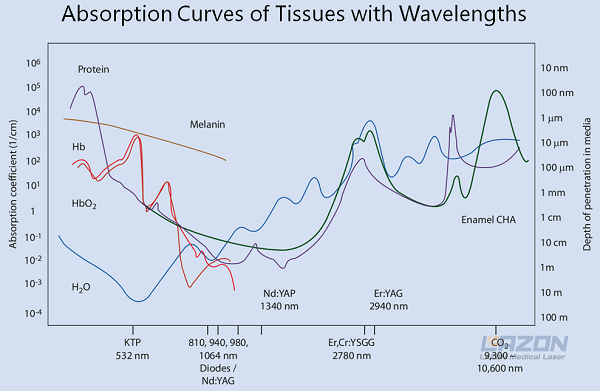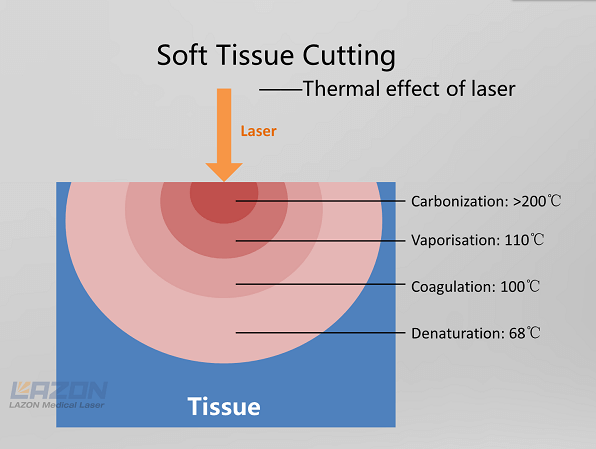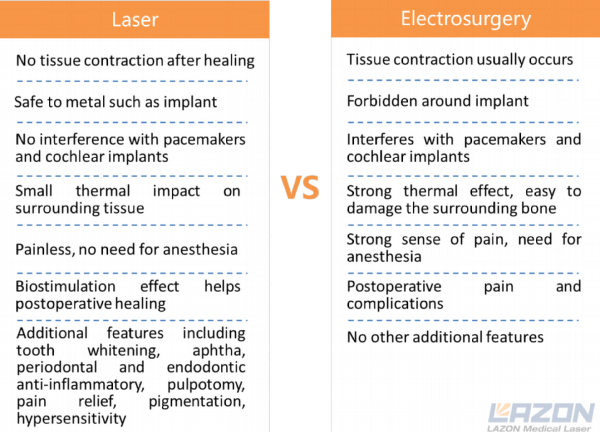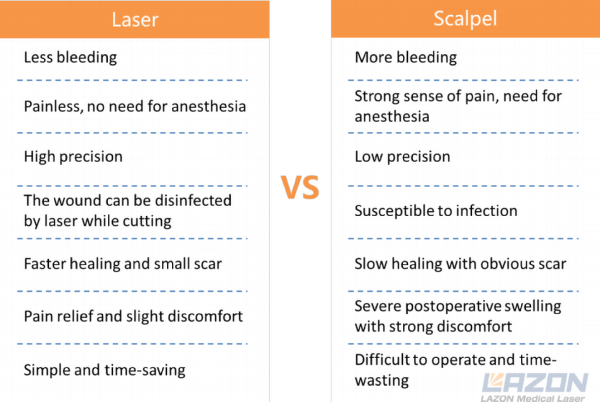Over the last three decades, lasers as high-technology instruments and very helpful tools, have been slowly incorporated into dentistry. Laser treatment has been proved to be high quality, minimally invasive, comfortable, and patient friendly. Now there are a growing number of practitioners embracing the technology and appreciating how their patients can benefit.

Diode lasers wavelengths in the 810–1,100 nm range are poorly absorbed by the soft tissues such as the gingiva. So it cannot be used for soft tissue cutting or ablation directly. Instead, the distal end of fiber tip is charred (by burned ink or by burned corkwood, etc.) and the char is heated by the 810-1,100 nm laser beam, which in turn heats up the fiber tip. When the tissue temperature reaches 110 ℃ due to the contact of the fiber tip, soft tissue will have vaporization because of the thermal effect. In this way the soft tissue is cut by the hot charred fiber tip, not by the laser beam.

Cutting or ablation of soft tissue now is the main application of dental diode laser in oral surgery. At same time, laser surgery is an operation with a complete hemostasis and effective decontamination of the tissue. We can say that, if you can use an electrosurgery device, you can easily adapt to laser therapy, and will be amazed by the ease of use and its versatility. A diode laser has distinct advantages over both the scalpel and the electrosurgery unit.


With 50KHz frequency, max 16W peak power output and other advanced configurations, the indications of SOLASE dental diode laser includes: